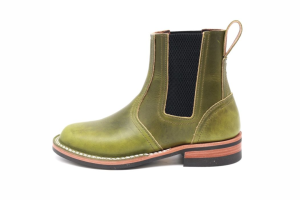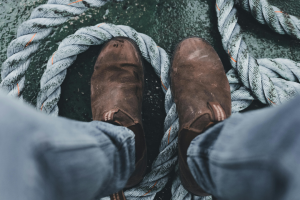3 Features To Look For In Lineman Boots

Every trade has different demands when it comes to work boots, but linesmen have some very specific needs when it comes to their boots.
It's not the easiest trade. Linesmen have to go up and down ladders, climb telephone poles with gaffs as well as working dozens of feet off the deck. You can't have equipment that doesn't help keep you safe, including footwear.
The unique nature of the job requires that a pair of lineman boots that can stand up to the rigors of the work. Here's what you need to look for.
Lineman Boots Need A Strong Shank
One of the features that's a must have for a lineman boot is a strong shank. The additional reinforcement is vital for ascending ladders and using gaffs to climb poles as the most common contact point with the foot tends to be in the arch.
In bootmaking, a shank is a piece of material (or several) that are inserted into the arch area of the boot to give it reinforcement. Exactly what that material is depends on who makes it.
Some bootmakers use a fiberboard insert, some are known to use balsa wood and others use steel.
Higher-end work boot makers use additional leather, usually with a harder vegetable tan, to give the boot the reinforcement but allow a very minor amount of compression to mold to the user's feet. These tend to give the boot more lasting support, and greater comfort.
Unfortunately, not every bootmaker necessarily advertises what their boot shanks are made of. Many will say their boots have one, but not what it is.
Unless you come across a company that specializes in handmade leather work boots that discloses what their shank material is, you may have to do some digging to see if it's a boot worth investing in.
A Rugged Sole With Good Traction And A Contact Patch In The Arch

A related feature to look for is a rugged sole with aggressive traction and a contact patch in the arch of the sole itself.
You need a strong shank that gives you the necessary support for climbing ladders and sinking gaffs into poles, but you also need a boot sole that gives you the grip necessary to keep firm footing.
A contact patch in the arch adds some texture for additional traction while climbing ladders.
Obviously that's important on the face of it, but doubly so if you have to deal with precipitation. Unless you live in the southwest and rarely see rain or snow, you're going to be working outside in some inclement weather some of the time, and you need to be able to keep your footing.
Granted...ANY work boots should have enough traction for a person to be working on their feet all day. But there's a big difference between a little slip walking from the car to the office, and feeling a little slip when you're 45 feet up in the air.
An office jockey can slip or fall and be just fine. A linesman that slips and falls can die from it. Having aggressive traction is not just a "good idea;" it's critical.
Sufficient Protection For The Feet And Lower Legs
There are some jobs that you just can't wear Chuck Taylors to.
Linesmen have a trade that has some danger of injury, so it's essential to have work boots that protect the feet.
The boots should be made of strong leather, and they should have a thick heel and sole that protects against punctures or impact.
The shaft of the boot should be tall enough to protect the lower legs. However, you want to take care not to get them so tall that you rub your calves raw.
If you want taller boots for the utmost in lower leg protection, it's a good idea to get them tall enough to come over the widest part of the calf. That way, you don't have to worry about chafing. Lacing will be a pain, but you'll have the protection you need.
But Make Sure Your Lineman Boots Are Comfortable To Wear

It may go without saying, but it's also important to have boots that are comfortable to wear all day. Having a demanding job is one thing, but doing that job while your feet are hurting is miserable.
If you invest in your own health, safety and comfort, you'll get your money's worth and then some made to order lineman boots.
Make sure you get a pair of boots that provides the support you need to be on your feet all day, especially arch support. If you're looking forward to taking your boots off because your feet will be more comfortable, you need a better pair.
Obviously, linemen boots need to have the features that make it easier and safer on the job...but should also be comfortable enough to do it without being miserable.





